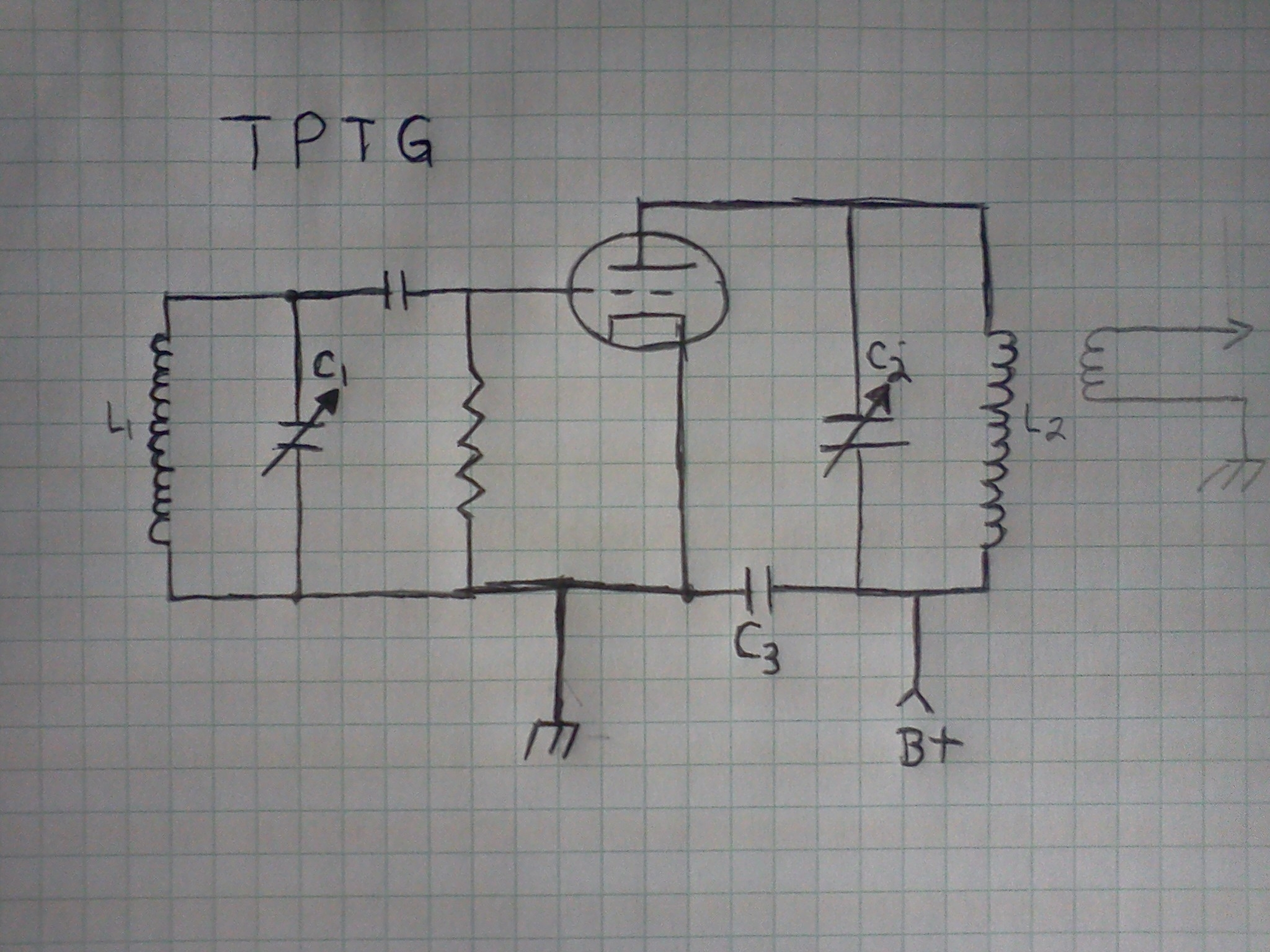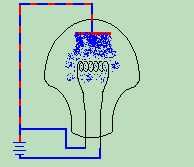


Lesson 58 - We're Stuck in a Loop(Even MORE about Oscillators)This is one of those mysterious circuits that one has to believe, can only have been invented (at least in part) by accident. ("Watson, come quickly!" vs "This thing's got GAIN!") And even then, it likely took weeks - perhaps months to find out why it worked! No one is insanely intelligent enough to actually invent a circuit like this on purpose! The basics of the circuit work on the combined principles of "interelectrode capacitance" and "resonant vibration". Huh? Picture in your mind a pair of tuning forks. If you strike a tuning fork, it will vibrate with a frequency. If you happen to have another tuning fork of the exact same dimensions, and if it is close enough to the first tuning fork, it will also begin to vibrate, even though you do not strike it. The reason for this is that the sound vibrations in the air will "resonate" with the second tuning fork, and assuming they are both "tuned" to the same pitch (frequency), the second one will vibrate via mutual resonance. In the tuned-plate, tuned-grid oscillator, unlike the Hartley or Armstrong, the feedback does NOT come via mutual conductance of the coils. In fact - keeping the coils far apart in this circuit is desirable.  Back to the TPTG circuit - What actually happens is that when both the plate and grid tank circuits are tuned to (or close to) the same frequency, voltage changes due to oscillations in the plate tank circuit (L2&C2) induce voltages on the grid directly through the tube via interelectrode capacitance. Because of the capacitance, these voltages just happen to be the right polarity to allow the oscillations to continue. Therefore, if the plate is slightly more positive, the voltage induced on the grid (the opposite plate of this small "capacitor) will be negative. This action will in turn cause a decrease in the plate current. With the plate current dropping, it causes the plate voltage in the tuned-plate circuit to drop. Back to the TPTG circuit - What actually happens is that when both the plate and grid tank circuits are tuned to (or close to) the same frequency, voltage changes due to oscillations in the plate tank circuit (L2&C2) induce voltages on the grid directly through the tube via interelectrode capacitance. Because of the capacitance, these voltages just happen to be the right polarity to allow the oscillations to continue. Therefore, if the plate is slightly more positive, the voltage induced on the grid (the opposite plate of this small "capacitor) will be negative. This action will in turn cause a decrease in the plate current. With the plate current dropping, it causes the plate voltage in the tuned-plate circuit to drop.
Because of the tuned-grid and tuned-plate acting like a parallel resonant circuit joined by a capacitor (the tube itself), the otherwise weak voltage fluctuations of the grid and plate are increased. Of course, in order for the oscillation to happen, both tank circuits must be tuned to similar frequency. By making only slight adjustments to the tuning of either circuit, you can control the amount of feedback, and hence, the strength of the oscillations. The exact frequency of the oscillator is somewhat determined by both tank circuts - but more so by whichever tank circuit has the least bandwidth. There are yet 2 more "major" types of oscillators which we should discuss, but both of them require a leap in learning - as we haven't discussed the components they are made of yet. The first is the Crystal Oscillator (Pierce Oscillator is one form of Crystal Oscillator). We have to first understand what a crystal is, and how it works before we can understand the crystal oscillator. The second is the monostable multivibrater, which requires at least a basic knowledge of flip-flops and digital circuitry. While we will cover this - keep in mind that complete books have been written just on the subject of digital electronics.  |
| (On The Following Indicator... PURPLE will indicate your current location) | ||||||||||||||||||||||||
| 1 | 2 | 3 | 4 | 5 | 6 | 7 | 8 | 9 | 10 | 11 | 12 | 13 | 14 | 15 | 16 | 17 | 18 | 19 | 20 | 21 | 22 | 23 | 24 | 25 |
| 26 | 27 | 28 | 29 | 30 | 31 | 32 | 33 | 34 | 35 | 36 | 37 | 38 | 39 | 40 | 41 | 42 | 43 | 44 | 45 | 46 | 47 | 48 | 49 | 50 |
| 51 | 52 | 53 | 54 | 55 | 56 | 57 | 58 | 59 | 60 | 61 | 62 | 63 | 64 | 65 | 66 | 67 | 68 | 69 | 70 | 71 | 72 | 73 | 74 | 75 |
[COURSE INDEX] [ELECTRONICS GLOSSARY] [HOME]
| Otherwise - please click to visit an advertiser so they know you saw their ad! |
